Rhea was having difficulty finding picture holders for two small 3" X 3" pictures from Sylvia (of her wedding to Herman). I offered to make a pair. Rhea liked the idea of a pedestal style and preferred aluminum to wood or brass. I found a 3" length of 1 1/2" aluminum hex.
The aluminum bar stock was held in the horizontal band saw using a machinist's jack to keep the vise jaw from racking. The saw gave a nice cut, though not perfectly square with the sides.
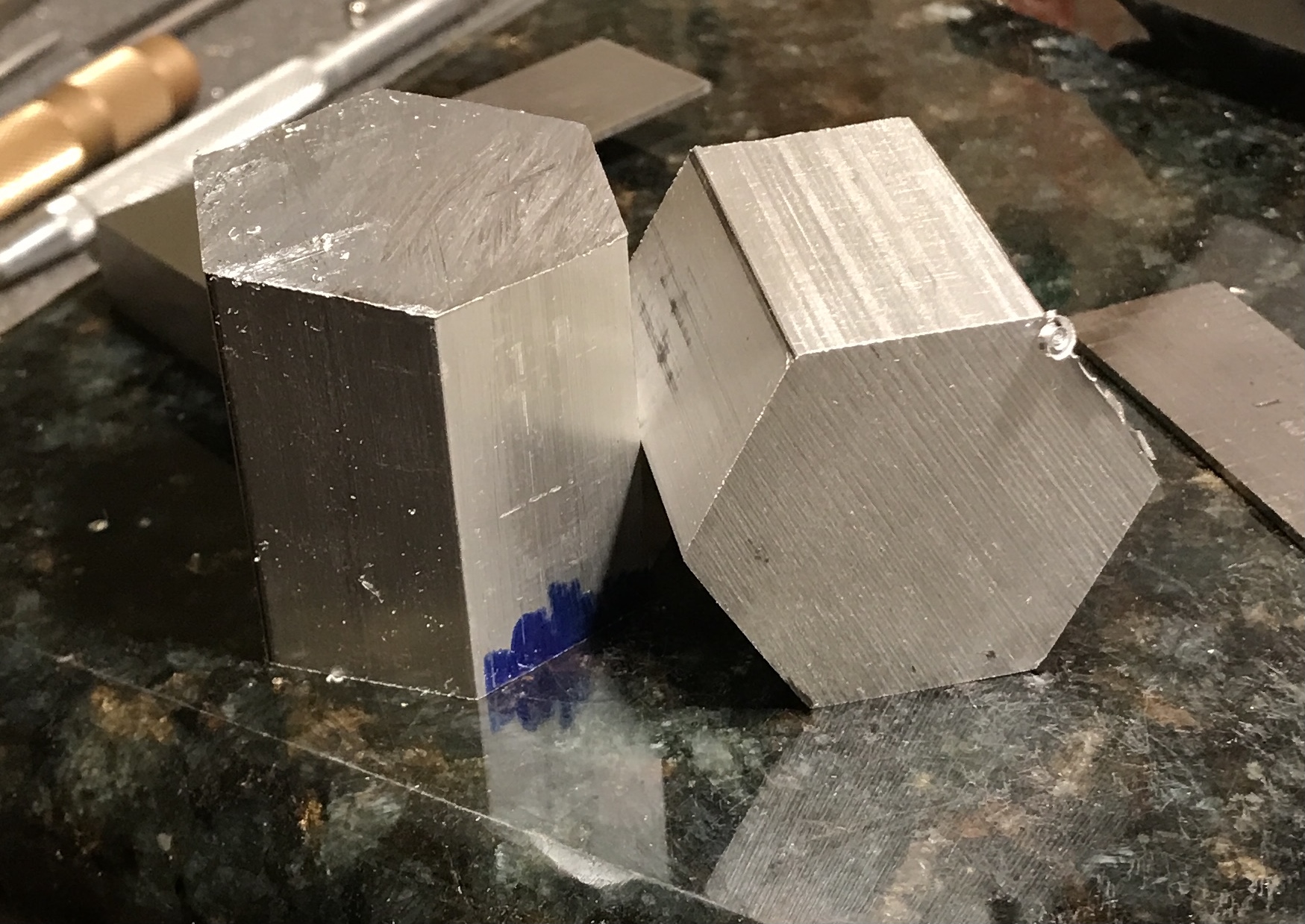
Each part was squared in the three jaw chuck on the Sherline lathe using a dial indicator. It was too cold to work in the garage and use the South Bend lathe. The ends were faced square with one another and with the sides of the hex. Both parts ended up 1 15/32" long. They are shown below.

While facing the two parts a ticking sound was heard coming from the lathe. At first I only heard it while the lathe was running and was unable to find the source. The jaws were not extended sufficiently to be hitting anything. After some time I was able to get it to make the sound when rotating the spindle by hand. Then I noticed the drive pulley had a slight movement relative to the spindle. I tightened a set screw holding the pulley to the spindle and the noise vanished.
The shape was laid out with the French template on a piece of graph paper. Four cuts were sketched out to get close to the desired shape. The part was held in the lathe after positioning with 1/16" sheets of brass shim. The first cut after turning it round reduced the part to 1 1/4" for 1 3/32". The second cut further reduced 1 1/32" to 1" diameter. The third cut dropped the diameter to 3/4" for 27/32" and the last reduced the last 21/32" to 1/2". The part at this stage is shown below.
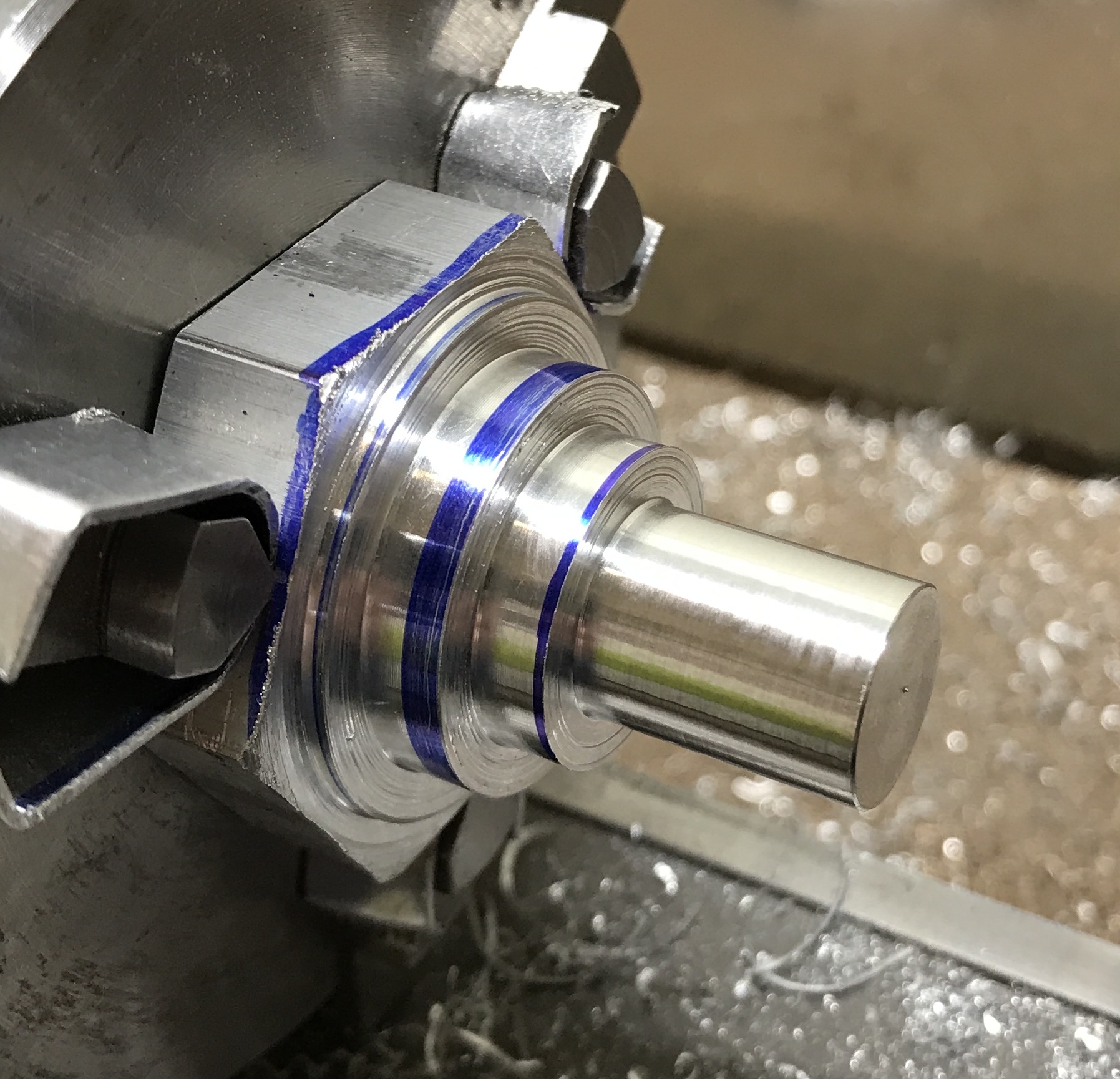
The next two hours were spent filing with a half round file and sanding with 100 grit paper to bring the part to final shape. This was way too much work. The step cuts should be significantly finer on the second holder. The pictures below document the process.
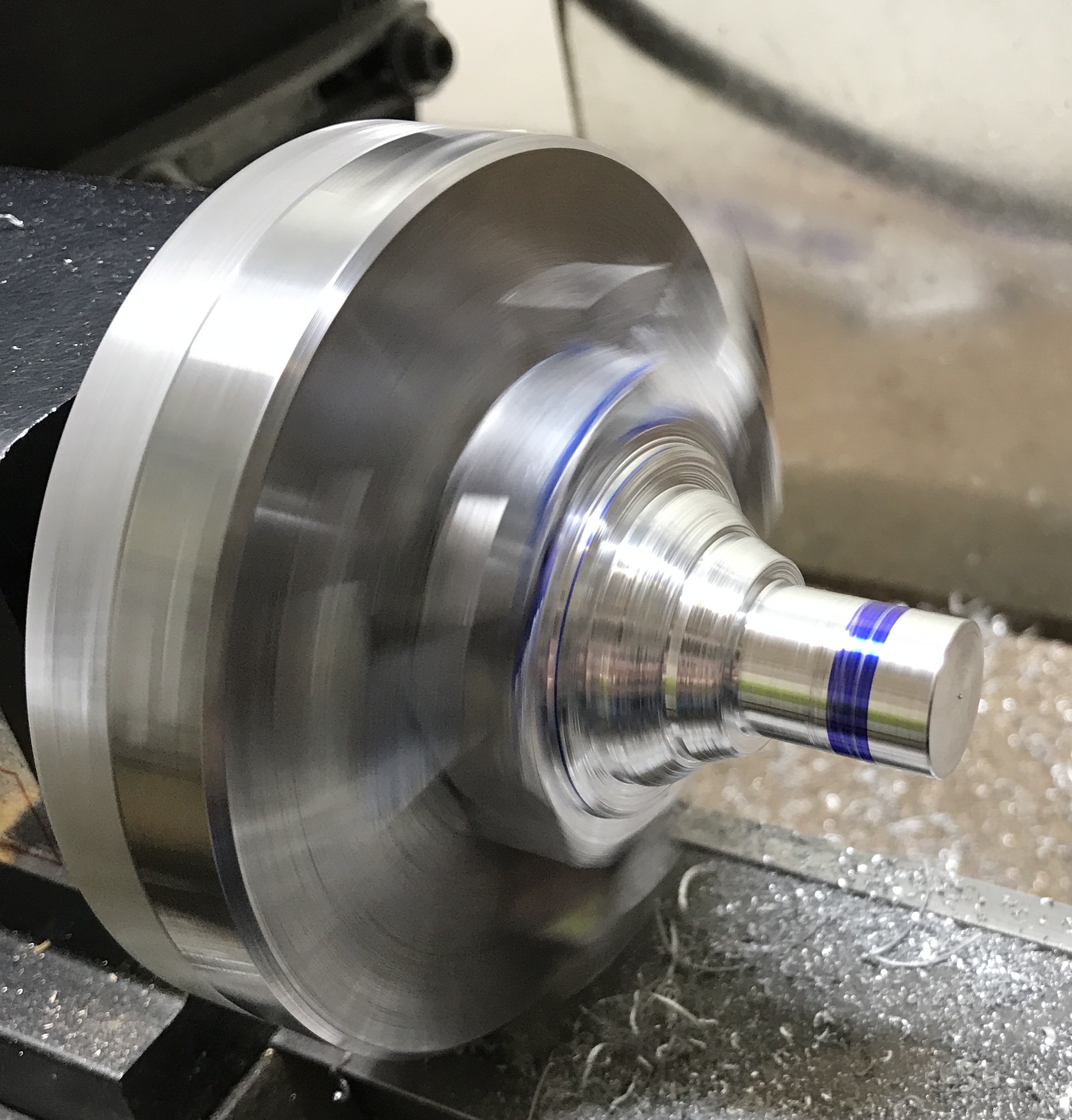
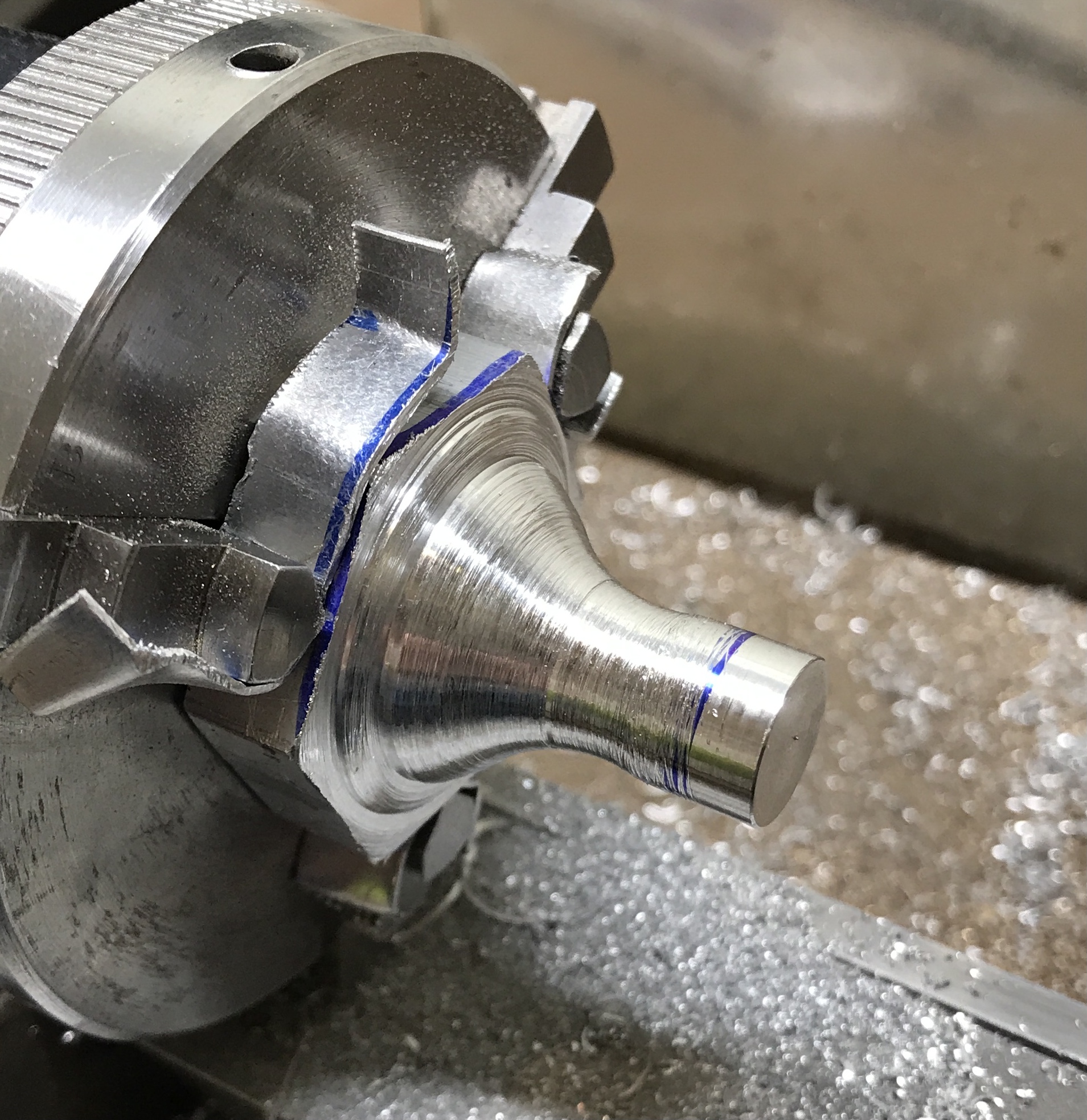
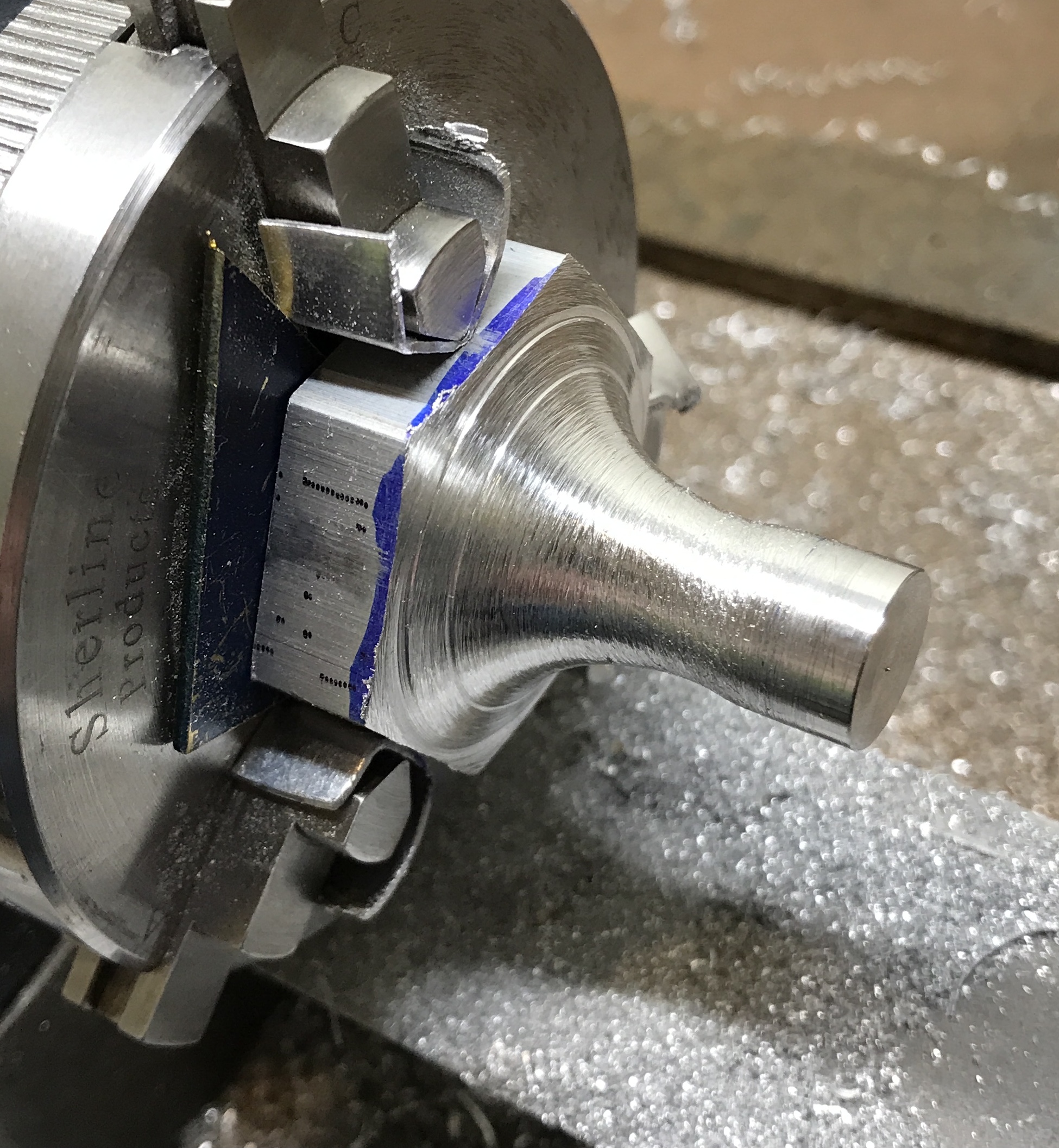
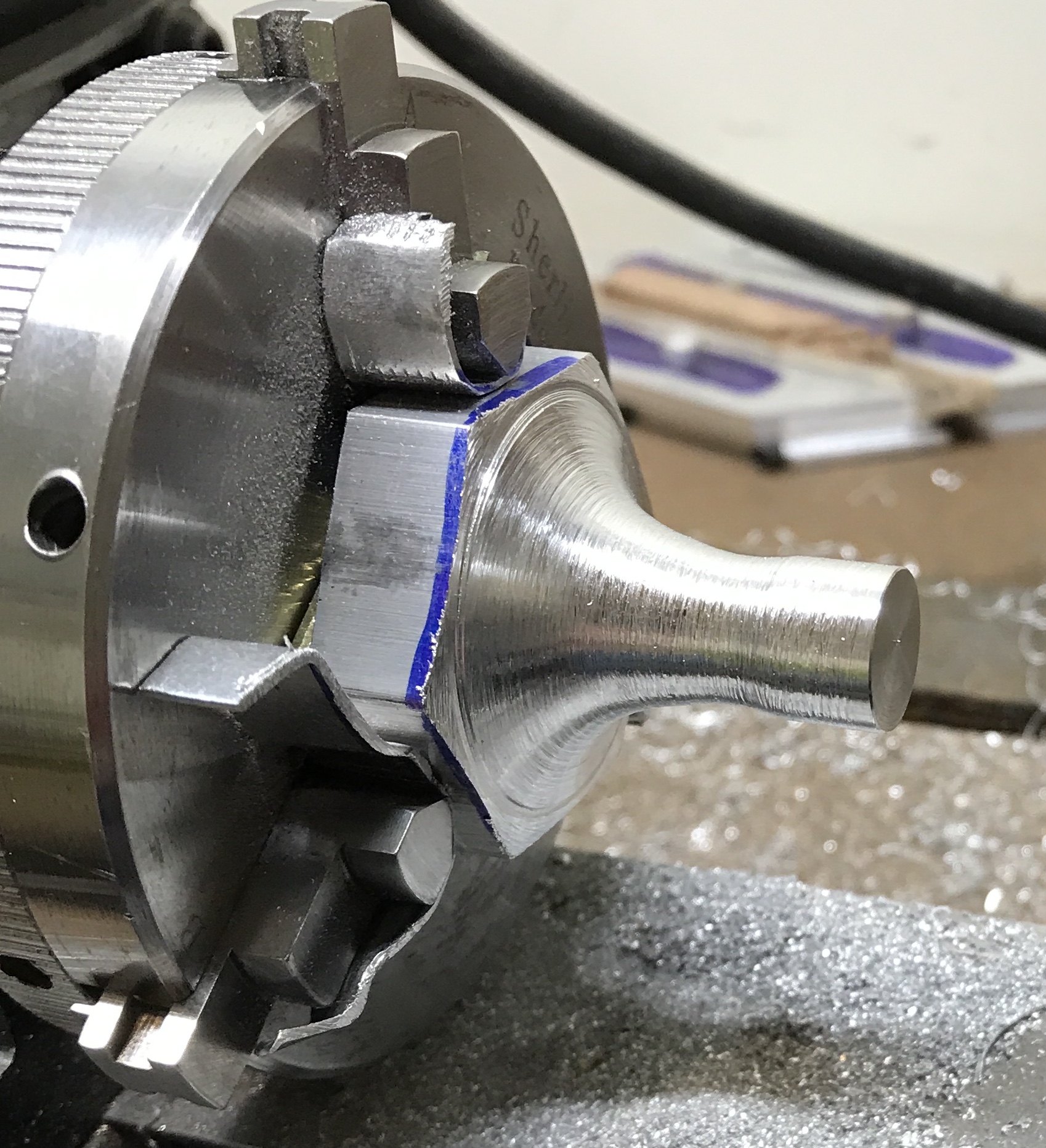
Spent the morning sanding. The holder was sanded in the lathe up to 1000 grit. The sides were sanded after removing from the lathe up to 600 grit. The holder was held in the mill vise and a slot was cut on center 0.375" deep with a 1/8" end mill. The slot was widened to 0.150". (The pictures are 0.145" thick.) The burrs were removed with a small flat file. The holder at this stage is shown below.
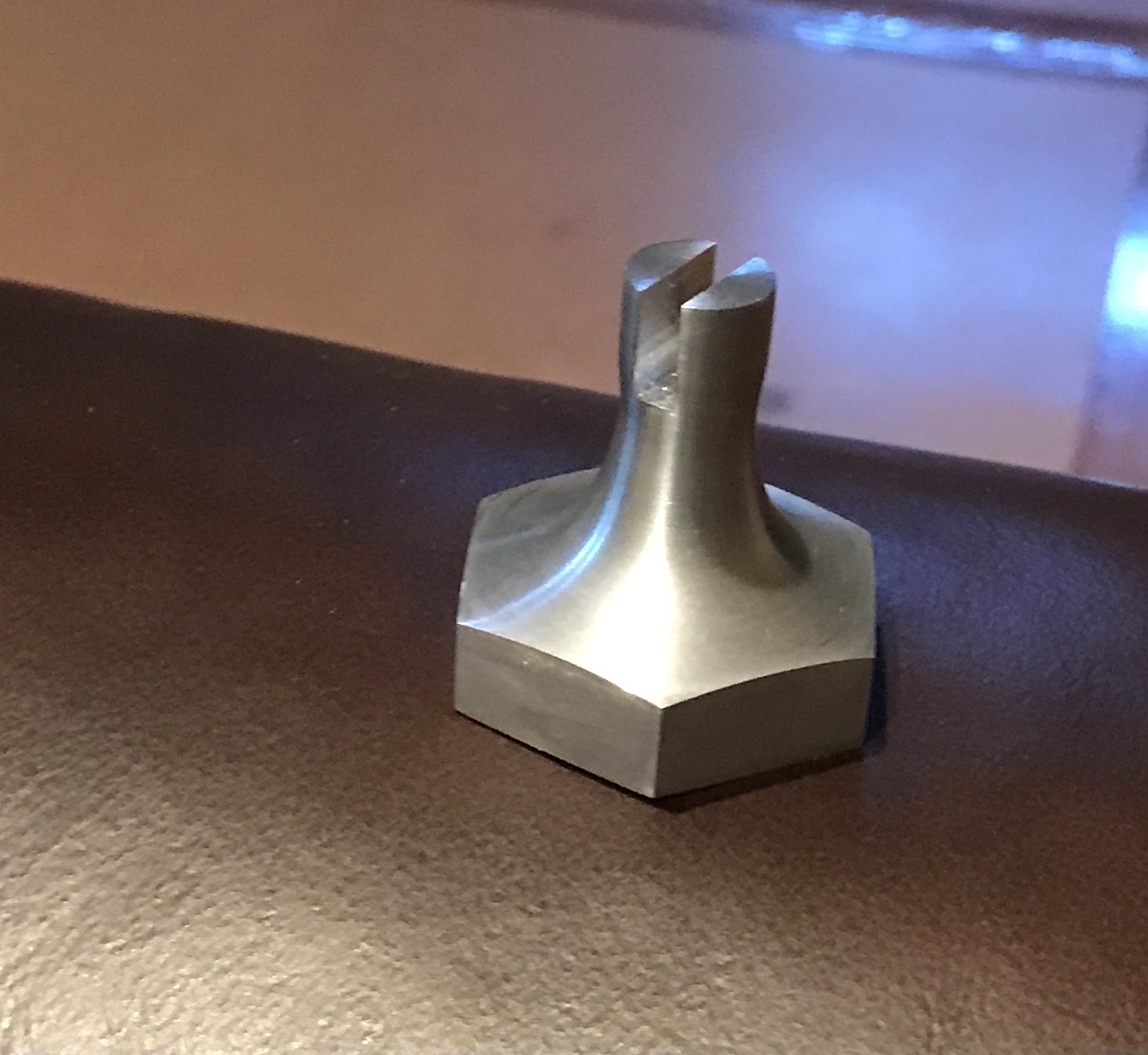
The holder is not very effective. The picture can be balanced in the holder, but it doesn't take much for it to fall out. The holder is also probably not heavy enough. A wider design might have been more effective. It holds the picture vertically, which is fine if the picture is at eye level. At least I don't need to make a second. I will need to find a way to repurpose the thing. Maybe a rook for a large chessboard.
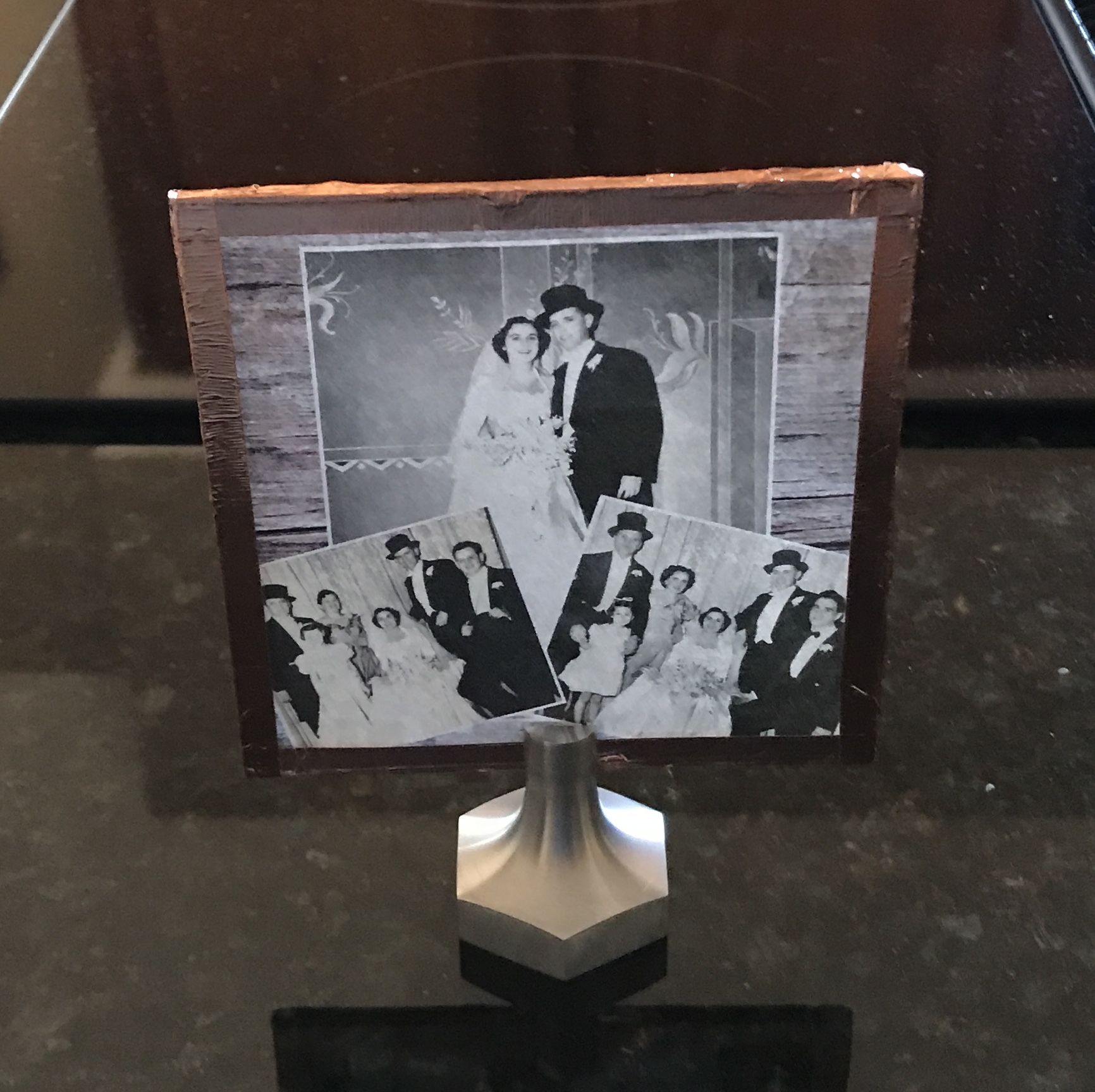
I couldn't leave well enough alone. I suggested using a set screw to hold the picture more firmly. Rhea liked the idea. I milled a flat on one side of the top with a 1/8" end mill. A #36 drill was used to drill a hole, followed by tapping 6-32. The picture is after polishing the picture holder with white rouge on a cloth wheel.
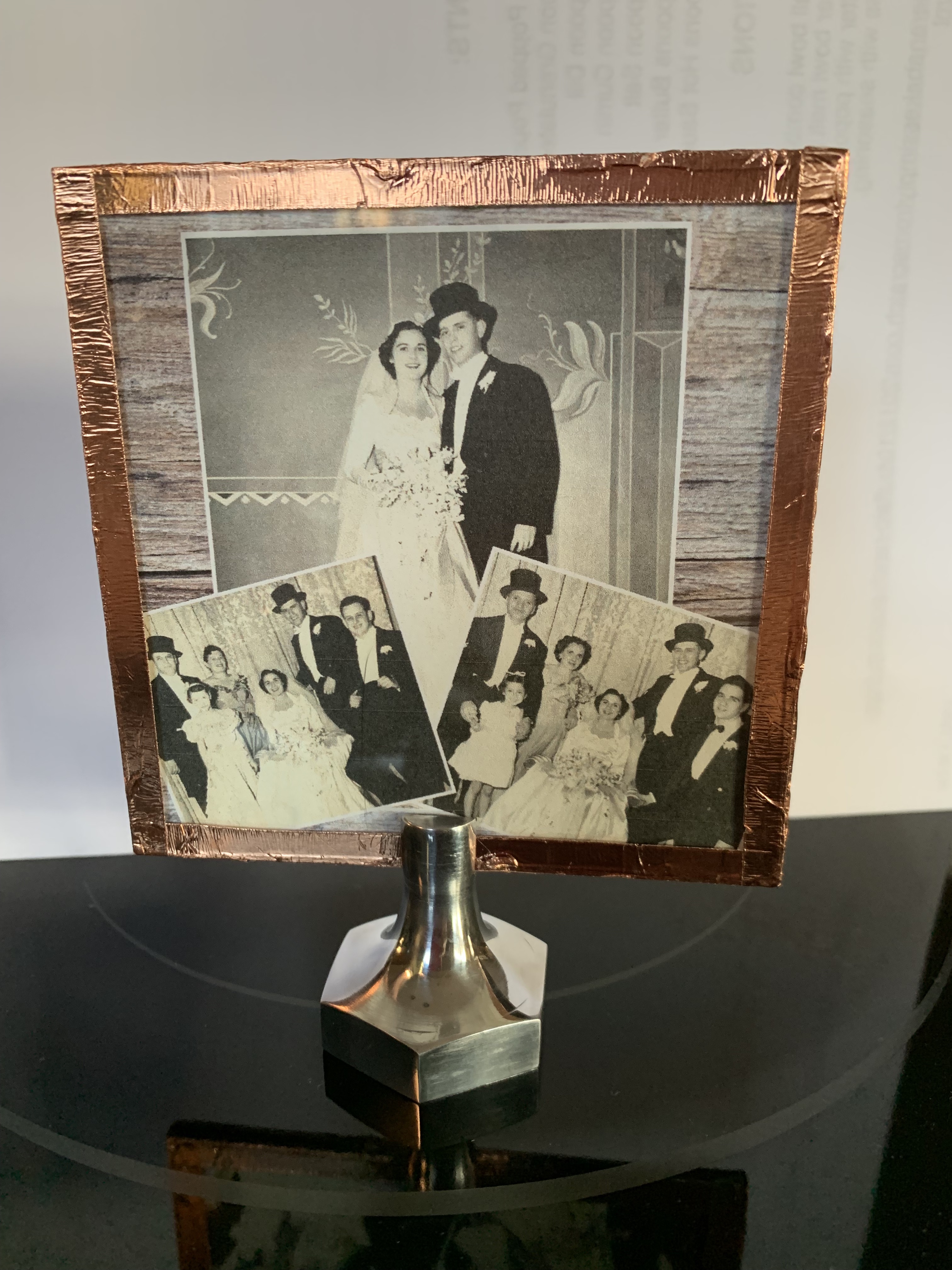
Sylvia said she like the picture holder after Rhea sent her the picture above. I need to find a better way to cut the curve more closely to the line and minimize filing time. After studying the code for the calculation tool, Round Groove Cutting it is clear that it can be generalized to Bézier curves by changing one function, getDepthOfCut(width,radius,fileBuffer). This function calculates the depth of cut, y, or radius - offset. I just need to substitute a function for the desired curve.
From the Bézier curve tutorial with control points, (57,220), (59,145), (143,88), & (206,96), the following two equations define the offset, x, and the depth of cut, y.
In order to solve for y given x, t has to be found given x and then substituted into the equation for y. An easier method is to make a table of x and their corresponding y values. The depth of cut can be looked up given x. Some experimentation should determine how many data points from t = 0 to t = 1 are required for the table. The screenshot below shows the curve as represented in Grapher.
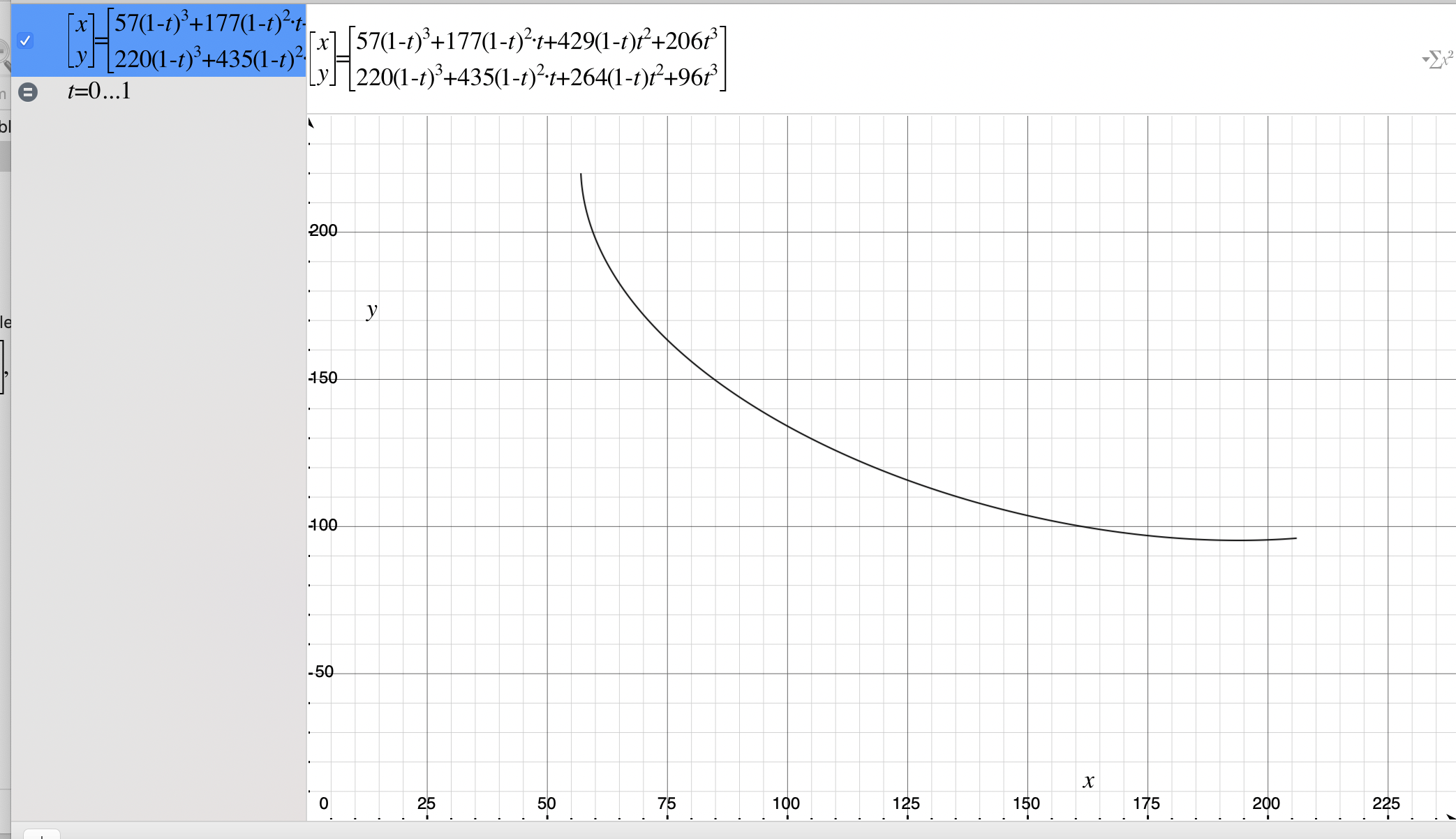
The calculator that uses the four control points from a Bézier curve to provide the correct cutting pattern is called Bézier Groove Cutting.
The calculator is functioning, but the output needs further modification to be useful. I am also not sure the output is correct. I pasted the output into a spreadsheet and after some minor changes graphed it. The curve looked good. However, when I used the data to cut the part the cut just looked like a 45° angle. In any event the part was filed to shape somewhat quicker than the previous version. Like its predecessor it was sanded to 1000 grit and polished. It was grooved to a depth of 0.375, drilled and tapped for the 6-32 set screw. It was deburred. The first picture shows the step cut part followed by a picture of the filed part.
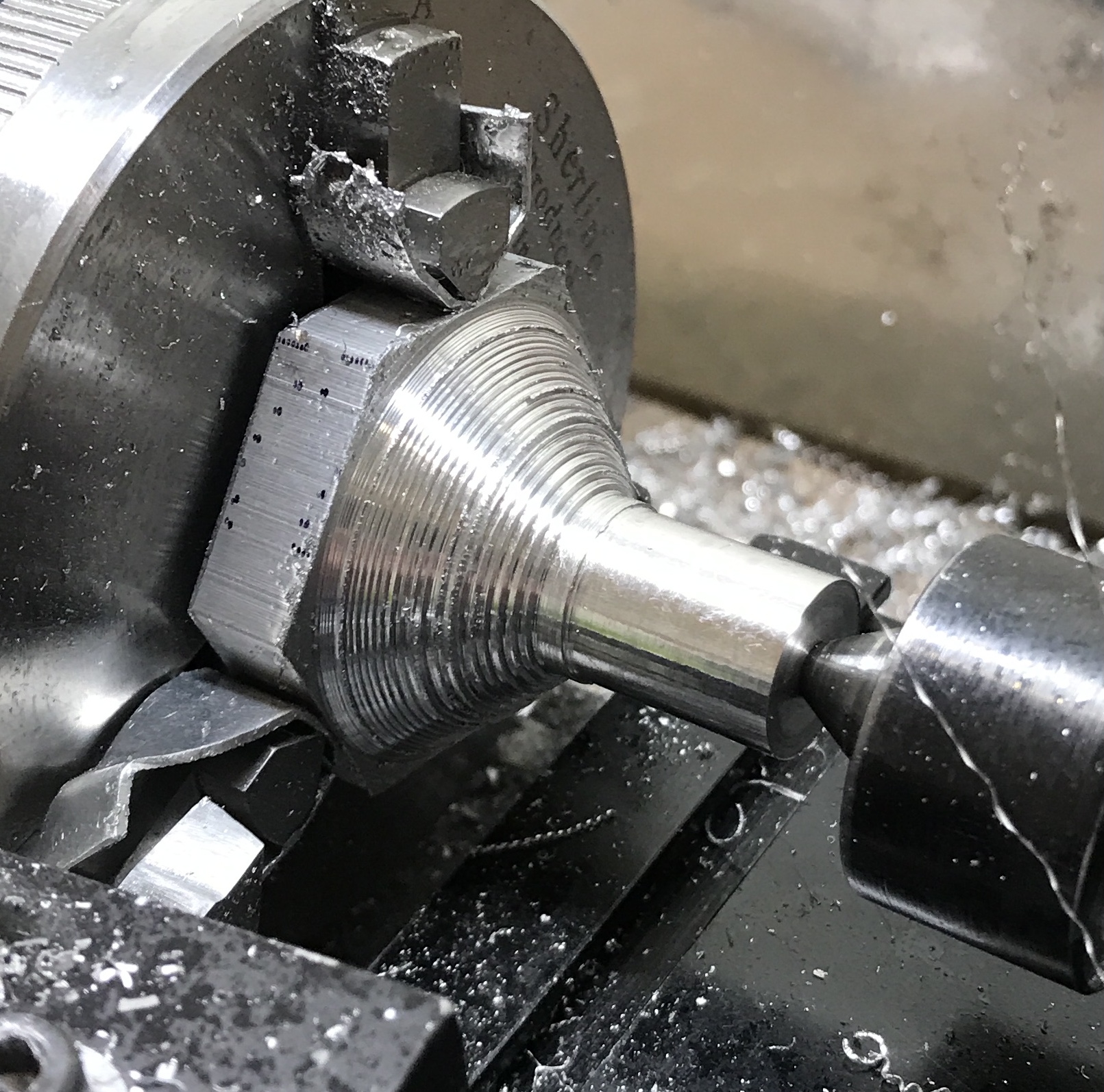
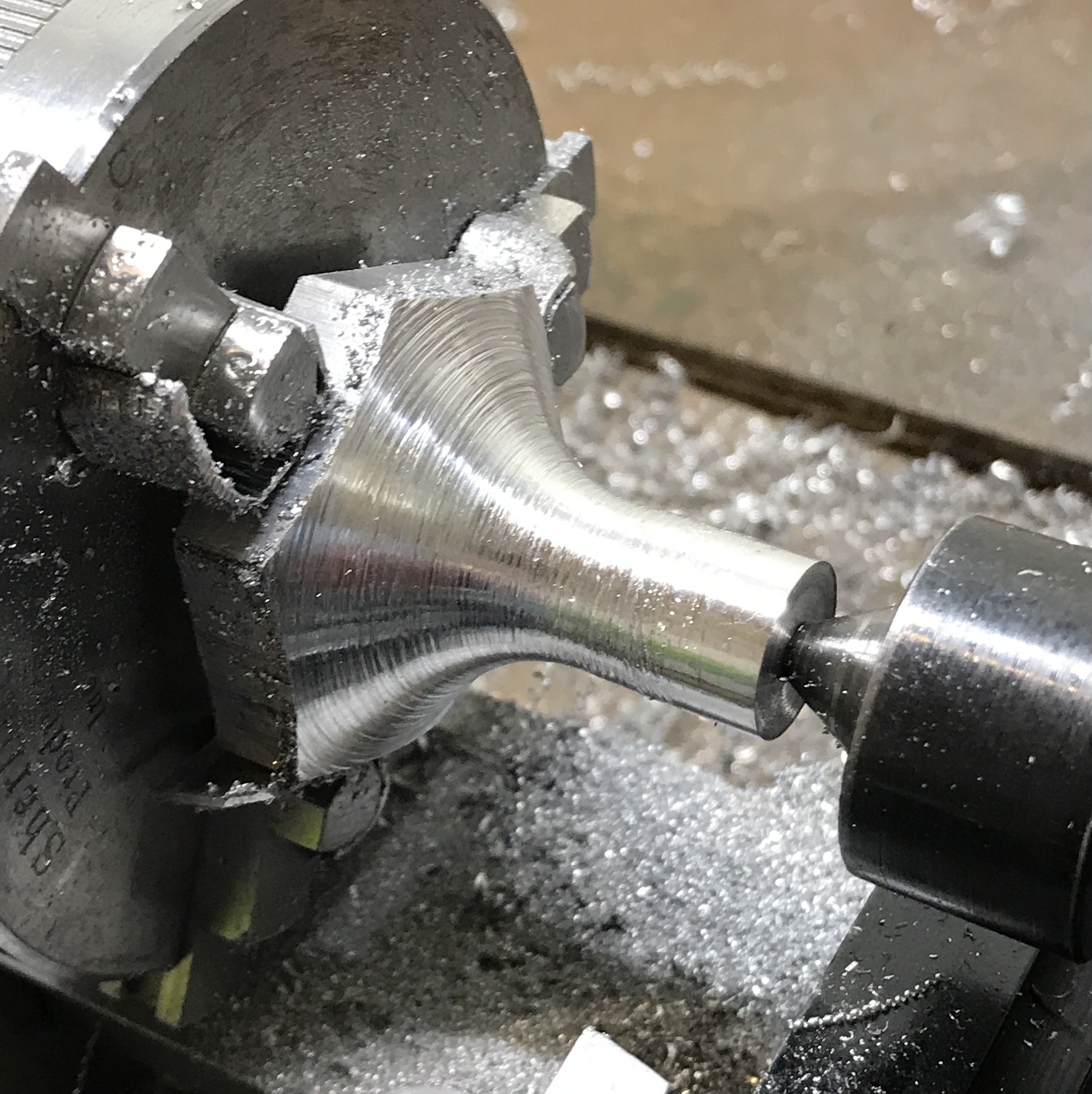
Both parts were washed with soap and water, rinsed with water, rinsed with acetone and painted with Protecta-Clear. A second coat was applied after one hour. A hexagonal piece of green felt was cut out and glued (Elmers) to the bottom of each picture holder.
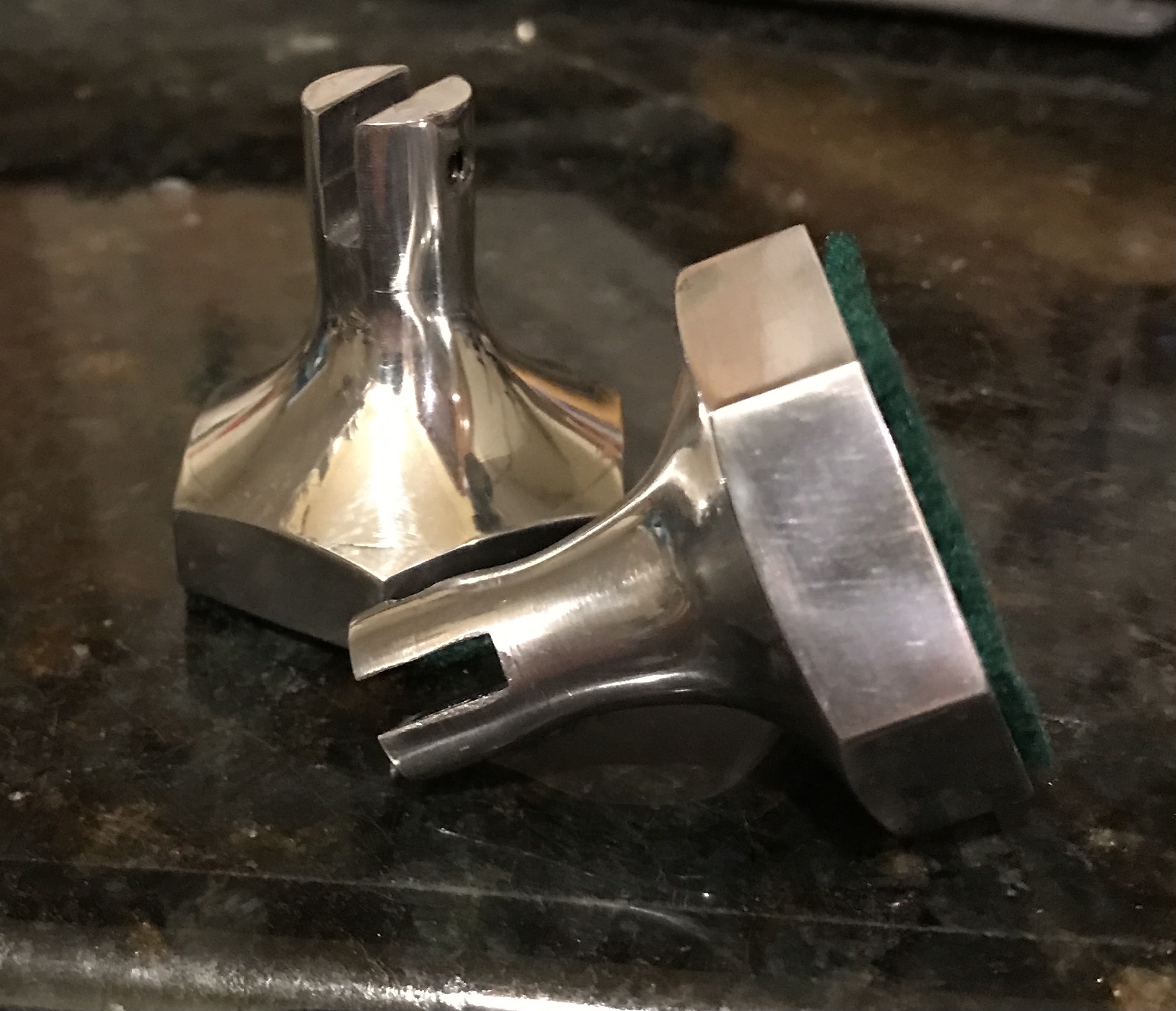
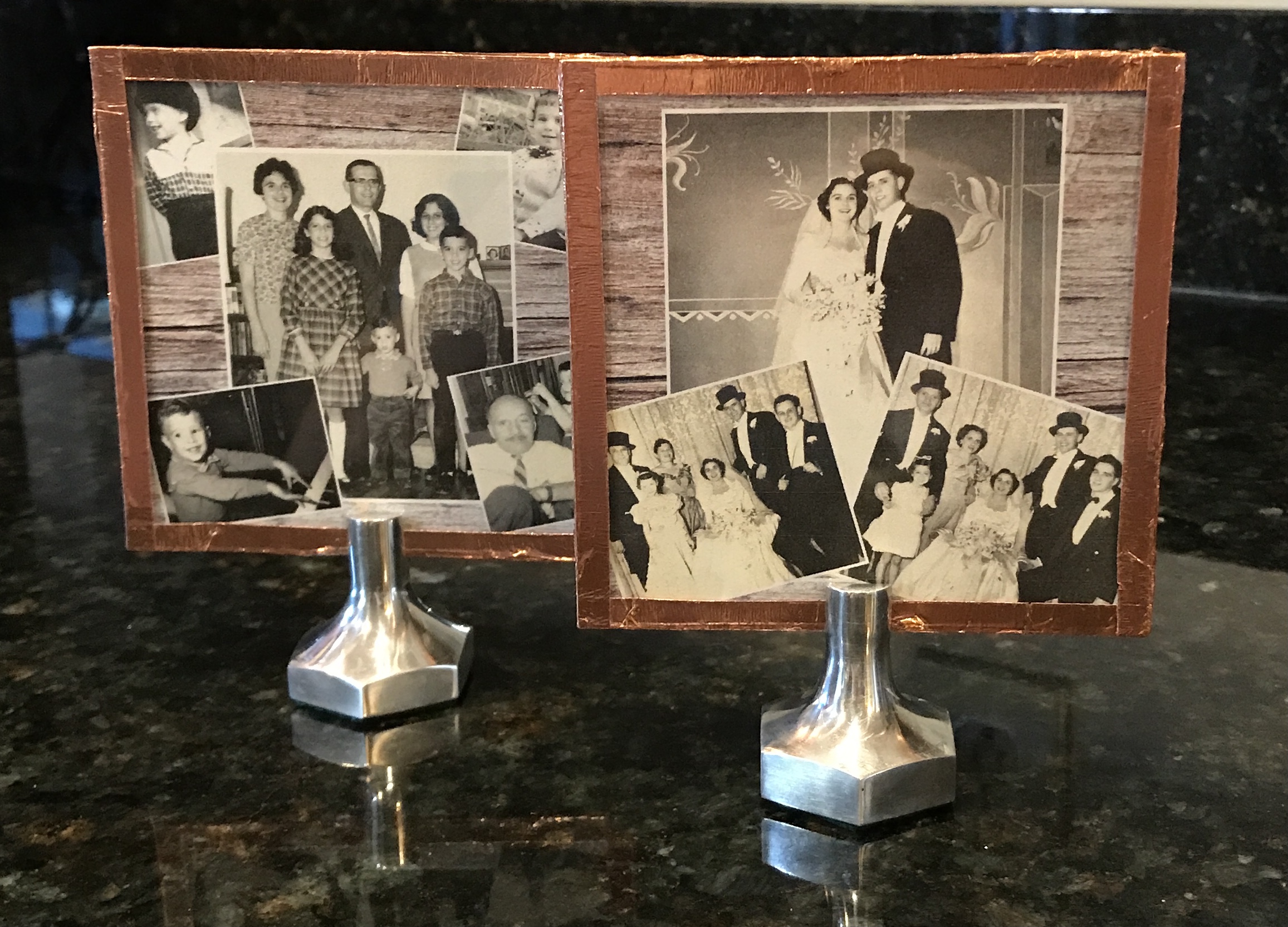
Turns out the pictures were made for Sylvia by my niece Rachel. Sylvia really liked the two picture holders.